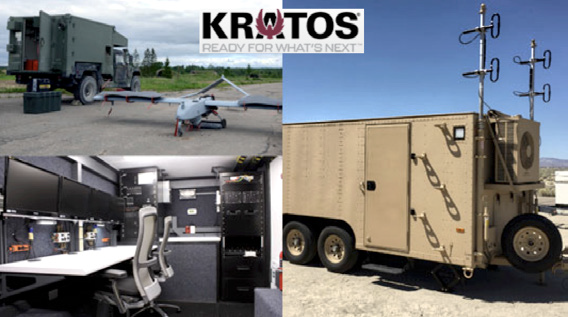Viasat’s 1st U.S.N. Military Sealift Command ship installation
Viasat, Inc. (NASDAQ: VSAT) has completed the first ship installation for the U.S. Navy Military Sealift Command (MSC) under the Next Generation Wideband (NGW) Follow-On (FO) 10-year, Indefinite Delivery/Indefinite

Quantity (IDIQ) contract awarded to Inmarsat Government by the Defense Information Systems Agency (DISA) on June 30, 2022.
Under the contract, the company maintains and operates commercial communications infrastructure, which includes satellite systems, teleport services and terrestrial services. Inmarsat Government is now part of Viasat’s government business, following Viasat’s acquisition of Inmarsat on May 30, 2023.
This first installation of 105 ships demonstrates the company’s ability to deliver a robust, reliable global managed satellite communications (SATCOM) solution. The company upgraded the MSC ship’s primary afloat network from Ku-band to the Global Xpress (GX) Ka-band system and ELERA Enhanced
L-band Maritime Antenna (ELMA), a variant of the award- winning, LAISR L-band solution to provide communications on the move via a small-size, high throughput terminal.
The hybrid solution of Ka- and L-band service ensures that the MSC ships have secure, resilient, worldwide communications capabilities, as well as a reliable global, on-demand backup network. This approach is designed to provide significant enhancements over legacy Ku-band by providing higher and scalable data rates on ships’ primary and back-up systems, and uniform coverage across the GX and ELERA networks.
Additionally, by delivering the primary and secondary SATCOM capabilities in a holistic, managed service model that includes satellites, ground networks and type-approved terminals – SATCOM as a Service.
The MSC fleet benefits from an integrated, worldwide solution that delivers high throughput with RF (Radio Frequency) band and path diversity to ships at sea. All of the network aspects are designed as a single solution and for mobility, so users experience a reliable, on-demand continuous service.
“As the premier maritime logistics provider for the U.S. Department of Defense, the Military Sealift Command plays a critical role in our nation’s defense. Our ships must have resilient communications capabilities that deliver consistent performance and can be relied

upon regardless of location or weather conditions,” said Eliot J. Skinner, Deputy Command Information Officer. “These upgrades ensure that our Mariners can confidently operate anywhere in the world knowing they have a reliable, redundant communications network supporting them.”
“We have reliably served the U.S. Navy Military Sealift Command for more than 10 years, and we are proud to continue supporting its operations around the world,” said Steve Gizinski, Managing Director, Viasat Government Services. “These upgrades provide the MSC fleet with significant enhancements in SATCOM capabilities, including expanded global coverage, improved reliability and resiliency, and the on-demand data rates that meet user needs.”
J.F. Lehman & Company completes their acquisition of Mission Microwave
J.F. Lehman & Company (“JFLCO”), a leading, middle-market, private equity firm that is focused exclusively on the defense, aerospace, maritime, government and environmental sectors, has announced that an investment affiliate has acquired Mission Microwave Technologies, LLC.


Founded in 2014 and headquartered in Cypress, California, Mission is a leading provider of Solid-State Power Amplifiers (SSPAs) and Block Upconverters (BUCs) to the SATCOM market. The Company’s X-, Ku- and Ka-band units support critical ground-based, airborne, maritime and space-based applications for government and commercial customers that require high efficiency, reliability and performance. Using advanced gallium nitride (GaN) transistors, unique power combining technology and novel full-system designs, Mission provides the industry’s most efficient, lightweight, and compact high-power devices.and Washington, D.C. More info...
CopaSAT releases their STORM V3 SATCOM terminal
CopaSAT’s STORM V3 is easy to deploy with auto- provisioning and no commissioning required anywhere in the world with a service plan and attaches to vehicles and vessels via standard mounting systems.

STORM V3 provides flexible connectivity via a mobile hotspot that can use SD-WAN to select between cellular, Wi-Fi, or satellite networks for optimization, failover, or balancing.
“As the demand for resilient, low-latency satellite communication solutions intensifies, CopaSAT has designed the STORM V3 terminal that integrates state-of-the-art technology including the Starlink and Starshield antenna systems. This transformative system leverages low-latency LEO constellations that are setting new benchmarks for reliable SATCOMs-on-the-Move (COTM) and Communications-on-the-Pause (COTP) connectivity. Designed with precision and rigor, the CopaSAT releases their STORM V3 SATCOM terminal STORM V3 terminal is currently undergoing testing to MIL-STD-810H standards, ensuring durability and reliability in even the most demanding environments.
This milestone underscores our unwavering commitment to innovation and excellence, as we strive to provide our customers with unmatched performance and connectivity solutions that transcend boundaries and elevate possibilities,” Charlie Daniels, Business Development Director, CopaSAT
Orbit’s multi-purpose SATCOM terminals for armored vehicles intro’d
Orbit Communications Systems has unveiled the company’s Line-of-Sight (LOS) Multi-Purpose Terminals (MPT) for MILSATCOM for armored land platforms of all sizes.

Orbit’s line of Multi-Purpose Terminals, including the MPT-30 and MPT-46, redefine mobile communication with unparalleled reliability and speed. Designed with versatility in mind, these compact, yet powerful, terminals can be installed on a variety of mobile platforms, from armored vehicles to ATVs, ensuring seamless broadband connectivity in even the most challenging terrains.
Their low size, weight, and power consumption (SWaP) design offers high performance — over 126 Mbps for downloads and up to 29 Mbps for uploads. This ensures that high-volume data, including live video streams, can be transmitted without interruption, a critical factor for mission success.
Moreover, the terminals are built for the future, supporting a wide range of satellite orbits — Low Earth Orbit (LEO), Medium Earth Orbit (MEO), Geostationary Orbit (GEO), and Highly Elliptical Orbit (HEO)—and are compatible with both Ku- or Ka-bands. By catering to the diverse needs of modern military operations, they enable forces to maintain critical communication lines, enhancing situational awareness and operational effectiveness across a spectrum of environments.
The terminals comply with MIL-STD and Civil standards as well as with International, national and satellite SATCOM regulations. They are compatible with military satellite systems, making them an ideal choice for Intelligence, Reconnaissance, and Surveillance (ISR) applications, which require highly accurate tracking capabilities, as well as meeting the ‘everywhere, all-the-time’ coverage requirements of military users.
“We are proud to further extend our MPT family and offer its high-performance proven capabilities to military vehicles of all sizes,” said Dany Eshchar, CEO of Orbit Communications Systems. “ Orbit’s MPT systems have been deployed on various mobile platforms around the world and now can provide “anywhere, anytime’ communications to the forces in the field and ensure successful completion of complex missions such as border protection, ISTAR missions, and more.”
About Orbit communication Systems
Orbit Communication Systems Ltd., a global leader in the field of airborne communications, satellite tracking, maritime services, ground-station technology, and cutting-edge solutions for the new space era, is revolutionizing the way we connect with the world. Our state-of-the-art systems are found on an extensive range of platforms, from mission aircraft and trainers to rotary-wing aircraft, transport vessels, tankers, and jet fighters. We also extend our reach to cruise ships, naval vessels, ground stations, and offshore platforms. The company delivers cost-effective, and highly reliable solutions to commercial operators, major air forces and navies, space agencies and emerging New Space companies.
Gilat awarded million$$ follow-on order from the U.S. DoD
Gilat Satellite Networks Ltd. (Nasdaq: GILT, TASE: GILT) recently revealed that the U.S. Department of Defense (DoD) awarded a $10 million follow-on order to one of the company’s U.S.-based subsidiaries, DataPath.

This additional order is for DKET 3421 terminals, transportable SATCOM hubs that deliver the operational flexibility, capacity, connectivity, and control required to ensure success anywhere in the world.
The field-proven DKET 3421 terminal supports multi-carrier operations with a scalable modem architecture (up to 32 modems) Gilat awarded million$ follow-on order from the U.S. DoD while weighing under 5000 lbs. to allow for easy transport over air, land, or sea via a variety of aircraft and vehicles.
Deploying in less than three hours, the DKET 3421 provides a satellite network hub in the form of a single-skid with the flexibility to leverage available satellite assets.
“Our solutions are specifically tailored to meet the strict requirements of government and military operations. We take great pride in our unwavering dedication to meeting and exceeding the expectations of our customers, and our team works tirelessly to provide innovative solutions to their mission-critical requirements,” said Barry W. Botts, Vice President, Sales and Business Development for DataPath. “This follow-on order is a testament to the outstanding performance and satisfaction our solutions consistently deliver.”
Umbra unveils bistatic SAR data from the firm’s tandem pair of smallsats
Umbra has announced the forthcoming release of imagery from the firm’s tandem pair of Synthetic Aperture Radar (SAR) smallsats.

Umbra is set to provide customers with bistatic SAR data later in 2024. The monumental launch of Umbra’s first tandem pair of satellites, Umbra-07 and Umbra-08, aboard the SpaceX Transporter-9 mission on November 9, 2023, marked a significant leap in SAR imaging.
With eight satellites currently on- orbit, Umbra plans to deploy the remaining satellites in its licensed, 32-satellite constellation in strategically designed pairs. Operating satellites in a cluster formation facilitates multi- static collection and other integrated operations, offering distinctive phenomenology and inherent resilience.
This innovative approach opens the door to various applications, including Intelligence Surveillance Recognizance (ISR) capability, elevation modeling, imaging resilience, and the implementation of moving target indication techniques.
Umbra’s development of the technology necessary to automate formation flying and multi-static data processing has been dramatically accelerated by the Defense Advanced Research Projects Agency (DARPA) over the past year, which selected the company as a partner for its Distributed Radar Image Formation Technology program.
With the unique ability to capture images at day/night, all- weather capable, Umbra’s SAR satellites are indispensable for monitoring change. Umbra’s high-performance SAR satellites deliver the highest quality SAR data at unprecedented volumes and area density, enabling the U.S. Government, its allies, and commercial partners with actionable, all-weather insights.
Jason Mallare, Vice President, Global Solutions, said, “The ability to operate spacecraft in coherent pairs is an important step in unlocking the novel promises of cluster operations. The scaling up from one to many, with highly affordable individual satellites, enables clustered flight with the potential for proliferation of truly resilient systems that offer tremendous traditional and full spectrum capabilities.”
About Umbra
Umbra is a vertically integrated space technology company that offers intelligence data as a service to commercial and government customers. Our cutting-edge products help customers solve complex business, environmental, and security challenges. Umbra is founded, funded, built, and operated in the USA with headquarters in Santa Barbara, California, and has a presence in Austin, Texas, and Washington, D.C.
Kratos receives million$$ in awards for C-UAS + Air Defense System
Earlier this year, Kratos Defense & Security Solutions, Inc. (Nasdaq: KTOS) received approximately $50 million in awards for Products and Hardware, including for and in support of Counter Unmanned Aerial System (C-UAS), Air Defense and Radar Systems.

The $50 million total includes contracts and programs that were awarded to Kratos on a single award or sole source basis. Kratos is an industry leader in systems, hardware and microwave electronics, including for and in support of C-UAS, unmanned aerial drone, missile, radar and air defense related systems. At Kratos, affordability is a technology, with Kratos offerings envisioned and designed up front, for rapid, low-cost manufacturing and production, at scale and in large quantities.
Work under these recently received awards will be performed at secure Kratos manufacturing facilities and customer locations. Due to security related, competitive and other considerations, no additional information will be provided.
Eric DeMarco, President and CEO of Kratos, said, “Kratos’ technology, products, software and systems are supporting the U.S. warfighter and our allies defense and security related needs and requirements, including in current contested and high intensity conflict areas globally. Kratos’ ability to rapidly develop, produce and provide relevant, affordable solutions at scale and in quantity, we believe, is a competitive differentiator for our Company, customers, teammates and partners, and an important element of today’s global security and nse environment.”




